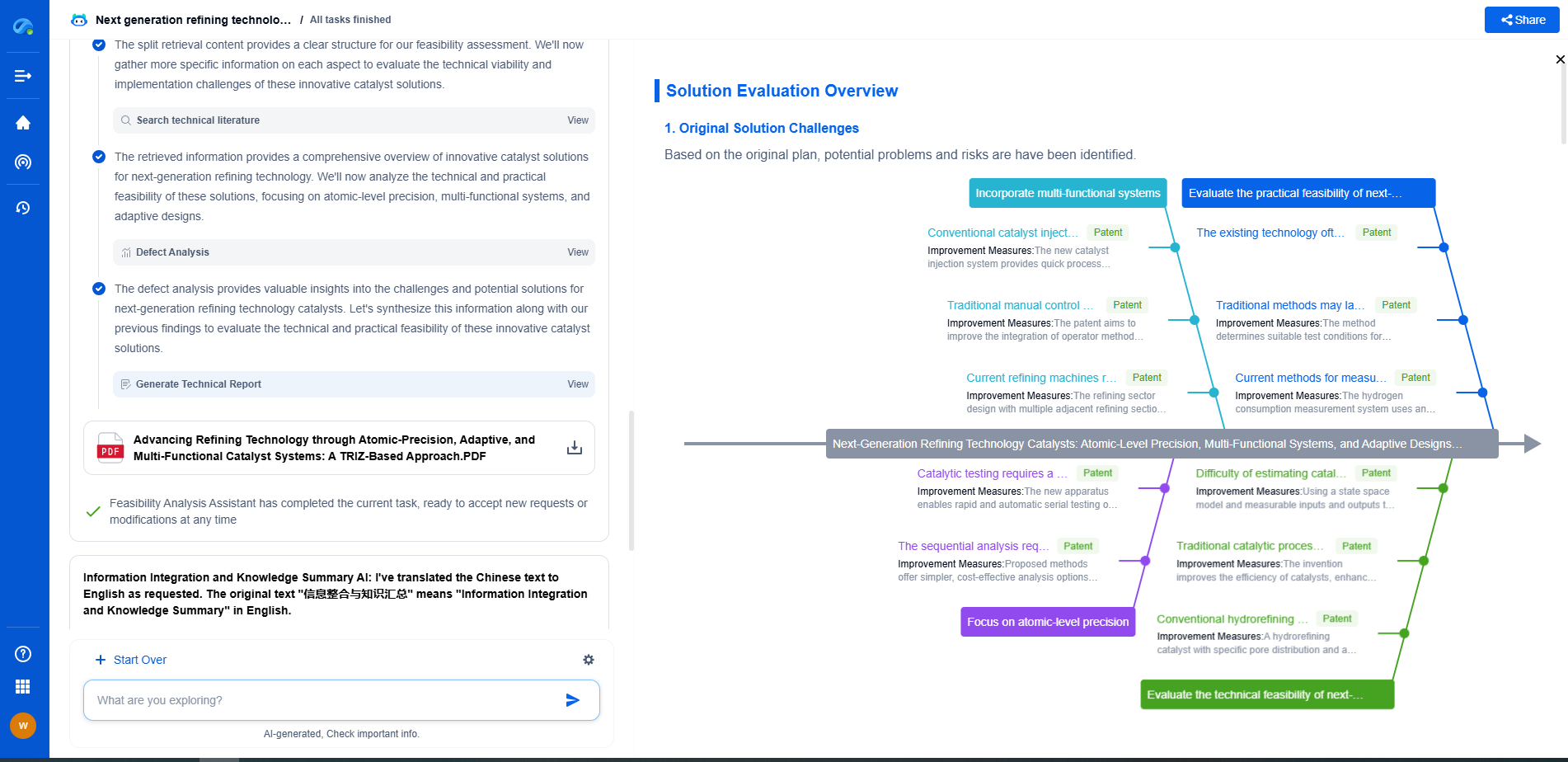LIDAR vs. Depth Cameras: Which is Better for Indoor Robot Navigation?
JUN 26, 2025 |
In the rapidly evolving field of robotics, choosing the right sensors for indoor navigation is crucial. Two popular technologies that are often compared in this context are LIDAR (Light Detection and Ranging) and depth cameras. Both have their unique advantages and challenges, which can significantly affect the performance of a robot in navigating indoor environments. This article delves into the key aspects of both technologies, weighing their pros and cons to help determine which might be better suited for your specific application.
Understanding LIDAR
LIDAR is a remote sensing technology that uses laser light to measure distances. It emits laser beams towards objects and measures the time it takes for the light to return. This information is then used to create a precise, 3D map of the environment. LIDAR systems are renowned for their accuracy and reliability, making them a popular choice for various applications, including autonomous vehicles and environmental mapping.
Advantages of LIDAR
One of the primary advantages of LIDAR is its high accuracy and range. It can provide detailed 3D maps with precision, which is particularly useful for navigating complex indoor environments. LIDAR systems are also less affected by lighting conditions, functioning well in both low-light and brightly lit scenarios. Additionally, LIDAR is capable of scanning a wide area quickly, allowing for efficient real-time mapping and navigation.
Challenges of LIDAR
Despite its advantages, LIDAR is not without its challenges. The technology can be expensive, which may be a barrier for projects with limited budgets. Furthermore, LIDAR systems can be bulky, which might not be ideal for smaller robotic platforms. Another consideration is that LIDAR data can be complex to process, requiring sophisticated algorithms to interpret the information accurately.
Exploring Depth Cameras
Depth cameras, on the other hand, use various technologies such as structured light or time-of-flight to capture depth information. These cameras provide both color and depth data, allowing robots to perceive their environment similarly to how humans do. Depth cameras are widely used in applications like gesture recognition, object detection, and augmented reality.
Advantages of Depth Cameras
Depth cameras are typically more affordable than LIDAR systems, making them an attractive option for budget-conscious projects. They are also generally smaller and lighter, making them suitable for compact robotic designs. Furthermore, depth cameras can offer rich visual data, which can be used for tasks beyond navigation, such as object recognition and interaction with humans.
Challenges of Depth Cameras
However, depth cameras have limitations, particularly in challenging lighting conditions. They can struggle in environments with bright sunlight or reflective surfaces, which can interfere with depth measurements. Their range is also typically shorter than that of LIDAR, which can be a disadvantage in larger indoor spaces. Additionally, while depth cameras provide rich data, the processing requirements can be demanding, necessitating powerful computing resources.
Comparing LIDAR and Depth Cameras
When choosing between LIDAR and depth cameras, it’s essential to consider the specific needs of your robot and the environment it will operate in. For environments where accuracy and range are paramount, and cost is not a primary concern, LIDAR may be the better choice. However, for applications where budget constraints exist and additional visual data is beneficial, depth cameras might be more suitable.
Conclusion
Ultimately, the decision between LIDAR and depth cameras for indoor robot navigation should be based on a careful assessment of the application requirements, environmental conditions, and budget constraints. Both technologies have their strengths and weaknesses, and the best choice will depend on the specific demands of your project. By understanding the capabilities and limitations of each, you can make an informed decision that optimizes the performance of your indoor navigation system.
Ready to Redefine Your Robotics R&D Workflow?
Whether you're designing next-generation robotic arms, optimizing manipulator kinematics, or mining patent data for innovation insights, Patsnap Eureka, our cutting-edge AI assistant, is built for R&D and IP professionals in high-tech industries, is built to accelerate every step of your journey.
No more getting buried in thousands of documents or wasting time on repetitive technical analysis. Our AI Agent helps R&D and IP teams in high-tech enterprises save hundreds of hours, reduce risk of oversight, and move from concept to prototype faster than ever before.
👉 Experience how AI can revolutionize your robotics innovation cycle. Explore Patsnap Eureka today and see the difference.
- R&D
- Intellectual Property
- Life Sciences
- Materials
- Tech Scout
- Unparalleled Data Quality
- Higher Quality Content
- 60% Fewer Hallucinations
Browse by: Latest US Patents, China's latest patents, Technical Efficacy Thesaurus, Application Domain, Technology Topic, Popular Technical Reports.
© 2025 PatSnap. All rights reserved.Legal|Privacy policy|Modern Slavery Act Transparency Statement|Sitemap|About US| Contact US: help@patsnap.com

